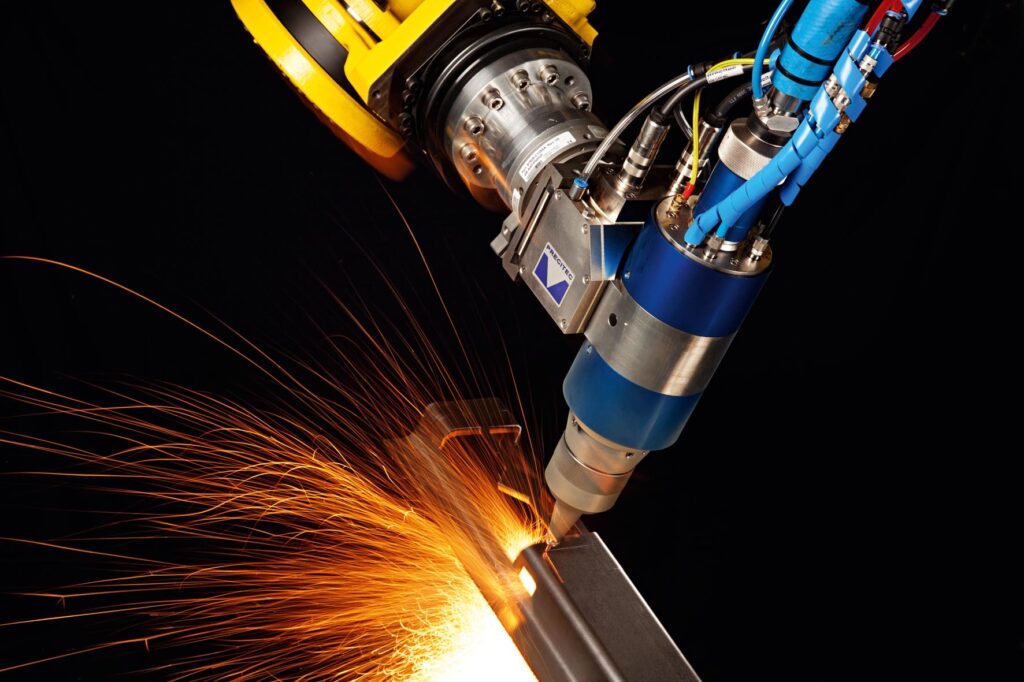- Head type: laser cutting head
- Aplications: 2D cutting, 3D cutting, tube and profile cutting, micromachining
- Tasks: laser beam focusing, precise cutting thanks to head position control
- Equipment: distance sensors, integrated axes, optics integrated with camera
- Advantages: high precision, high resistance to harsh environmental conditions, no finishing, can cut thick and difficult materials



Laser cutting heads
Due to the wide variety, laser cutting processes require laser heads precisely tailored to the type of laser and type of application.
2D cutting processes on gantry machines generally use heads that work with CO2 and fiber lasers equipped with distance measuring sensors to prevent collisions between the head and the workpiece. However, the latest solutions of this type offer much more functionality in the field of advanced sensorics, such as changing the position of the lens in motion and controlling the process flow in real time. A well-chosen cutting head makes it possible to machine a wide variety of materials – from steel, stainless steel and aluminum to nonferrous metals – while maintaining high process dynamics and speed. Its high flexibility compared to conventional cutting techniques, including the ease of adaptation to changes in the shape and size of the workpieces being machined, makes it possible to reduce clocking time and increase the efficiency of production processes.
The issue of positioning accuracy becomes even more important in 3D cutting processes using 5-axis laser cutters and robots. The cutting heads used in 3D machining are generally equipped with integrated axis systems that ensure that the correct distance from the workpiece is maintained and that the workpiece is cut precisely along the designated path. What’s more, such heads are increasingly constructed to withstand harsh environments and are equipped with communication interfaces to facilitate programming of the laser beam path.
Accurate positioning also plays an important role in pipe and profile cutting processes. This is because here we are dealing with two types of movements performed simultaneously – the movement of the workpiece (rotation and longitudinal positioning) and the movement of the cutting head upwards (Z axis) and sideways. The required positioning precision is ensured in this case by a sensor unit integrated with the head for measuring the distance from the workpiece, which, controlling the Z axis, protects the head from collision.






